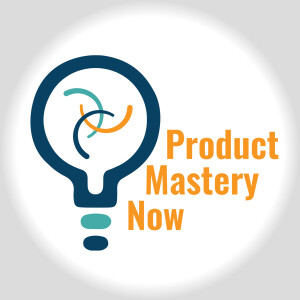
Product Mastery Now for Product Managers, Leaders, and Innovators
Business:Management

447: Better product portfolio management – with Gareth Bradley
 2023-07-24
2023-07-24
Today we are talking about portfolio management—creating a portfolio, adjusting it, selecting projects for it, and managing innovation.
Our guest is Gareth Bradley, Director of Product Management at Planview. Planview is a leading provider of product portfolio management solutions. Previous to Planview, Gareth held Product VP roles and managed innovation portfolios.
Summary of some concepts discussed for product managers [1:42] What is a product portfolio and why do we care about it?Product portfolios allow companies with multiple products to align work tracks around particular products. Companies organize their product portfolios either at the product level or around groups of products or services.
[3:12] What are some ways organizations structure portfolios?There are two worlds. The traditional world is where the structure of portfolios is around projects—how a work item starts, is worked upon, and is delivered to the market. These projects run in groups called the portfolio. Each project has a start date and end date. The traditional view is prevalent, but we’ve observed a shift from a project mindset to a product mindset.
In the product mindset, work is more continuous. You work in the product development lifecycle, thinking about a continuous evolution of a product or service that goes into market. The way your portfolio is structured needs to adapt for new innovations. The product mindset is the new frontier.
One of the biggest challenges for many organizations is striking the balance between a project- and product-oriented mindset. They may have been working in the project mindset for a long time. Now because of disruption in the market, they have to shift the way they think, and that’s tough to do.
[6:29] What are some example of project-driven and product-driven portfolios?Organizations delivering smart-connected products have had to make the jump to product-driven portfolios. When you’re manufacturing a physical thing, you work on one version and it’s complete. The development cycle is long. As more companies are dealing in software, the product mindset comes in. You cluster work to support the overall family group. For example, automotive entertainment requires a lot of software for a vehicle. There’s a family of supporting projects for that vehicle. Once the vehicle is out, there’s continual work on the software. As my CEO says, “Good software is not like fine wine. It’s more like sushi. It doesn’t get better with age.”
As an organization, you have to think about how you can maintain your position in the market. Think about the structure of getting the product out to market and balancing the portfolio to manage the whole lifecycle.
[10:03] How do you use buckets or horizons in portfolio management?The three horizons approach is dividing work into short, medium, and long term. Some companies organize their portfolios to keep each horizon contained.
In other organizations, like those spending a lot on R&D for medical devices, horizons one and two can become more muddled so you have incremental innovation to support the product that has gone to market.
Other organizations are purely doing R&D innovation. They work in horizon three.
[23:27] Where do innovation ideas enter the portfolio?Start with the end in mind—what do we want to put into market? Organizations that win at this game are the ones who think about the end in mind, predominantly around funding—how do we fund innovation in and around our portfolios?
Organize crowd structure into three buckets: incremental, disruptive, and breakthrough. (The crowd is employees, supply chain, partners, and customers—anyone you collaborate with.)
There is a middle space before the portfolio, an incubation area where you select 10-20 ideas from a thousand. The incubation area can be where pre-funding happens and where market fit is thought about. If you don’t do that middles step or if you don’t execute it well, you end up with a lot of good ideas but you can’t execute them.
I’ve worked with engineering companies who do this very well. They know what type of innovation they’re looking for and will line up the end with the start. In the incubation process, they make sure those ideas are viable.
As a project manager, you need to be in touch with the portfolio people to understand what kind of projects they have funding for. As a product leader or product VP, you would want your portfolio to have funding allocated for receiving new ideas.
[30:36] What are some indications we need to rethink how we’re allocating our resources in our portfolio?I look at throughput. What are we getting out into market? Are we finishing things on time as predicted on budget with the resources we have? We look at the whole lifecycle. What is happening in the market with what we already delivered? What are customers telling you?
Bring in complaint data and align spending with fixing bugs or issues that generate customer attrition.
Action Guide: Put the information Gareth shared into action now. Click here to download the Action Guide. Useful links:- Connect with Gareth on LinkedIn or Twitter
- Learn more about Planview
“Under the right circumstances, groups are remarkably intelligent, and are often smarter than the smartest people in them.” – James Surowiecki
Thanks!Thank you for taking the journey to product mastery and learning with me from the successes and failures of product innovators, managers, and developers. If you enjoyed the discussion, help out a fellow product manager by sharing it using the social media buttons you see below.
More Episodes
Create your
podcast in
minutes
- Full-featured podcast site
- Unlimited storage and bandwidth
- Comprehensive podcast stats
- Distribute to Apple Podcasts, Spotify, and more
- Make money with your podcast
It is Free
- Privacy Policy
- Cookie Policy
- Terms of Use
- Consent Preferences
- Copyright © 2015-2024 Podbean.com





